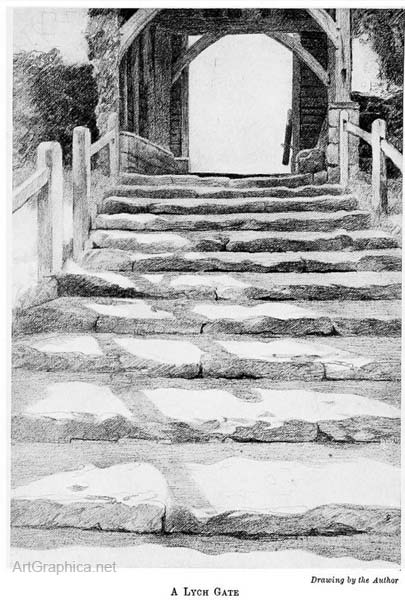Drawing in Perspective |
||||||||||||||||
|
Page 01 / 25
THE PRACTICE AND THEORY OF PERSPECTIVE AS APPLIED TO PICTURES, WITH A SECTION DEALING WITH ITS APPLICATION TO ARCHITECTURE
 PERSPECTIVE FOR ARTISTSBY REX VICAT COLE PREFACE IN our Art School days we looked upon Perspective with grave suspicion. We feared that cobwebbed in those entanglements of line there lurked our old enemies, Euclid and Geometry. My own distrust has never been wholly dispelled ; for which reason, out of sympathy for a new generation of art students, I have tried to set down the matter in plain words and to divest it of some problematical exercises dear only to the mathematical mind. These, in truth, sometimes lead to a negative result—the " which is impossible " of Euclid—or they have but little bearing on our art. Dr. Johnson has said : " Long calculations or complex diagrams affright the timorous and inexperienced from a second view, but if we have skill sufficient to analyse them into simple, principles, it will be discovered that our fear was groundless." A knowledge of Nature's perspective is essential to the artist. Her laws are not difficult to understand if they are taken one at a time, together with an explanation of the reasoning on which they are based. This is the method which I have followed in Part I. With the aid of some common sense on the part of the reader, it should be sufficient for all ordinary purposes. It is, however, necessary, in dealing with the drawing of architectural details, to resort to some elaboration—elevations and ground plans must be used ; expedients for simplifying the work here come into play. In order to prevent these seeming to confuse the issue they have been kept together in Part III. I have known students to attend a course of well-delivered lectures on Perspective and yet say they did not understand a single word of what the lecturer was talking about. This confusion may arise from the fact that some knowledge of geometry has been taken for granted by the lecturer ; or because ground plans, station points, and a host of intricacies are commonly used as the starting-point for the building up of the object to be drawn, instead of the object being first sketched and then put into correct perspective. The former method often leads to a most ungainly representation of cubes and circles that cannot but repel the student instead of interesting him from the very beginning In most fine pictures which have stood the test of time, one sees a keen appreciation of the possibilities of perspective. As the struggles of the early masters in formulating the science are full of interest, I have tried in Part II to tell the tale of Perspective as we see it in the works of the great old painters. It is told of an early Italian painter that to his long-suffering wife's entreaty not to burn the midnight oil he simply murmured, " Oh, this perspective—this beautiful perspective." No doubt he had just discovered a new vanishing point. Although in our day few discoveries remain to be made in the science, several deductions might gain by revision ; and we can present the principles in a simple form. This being my aim I have cribbed without a blush from the teaching of my old friend, L. A. Pownall, and I hope I have remembered verbatim some of the expositions which he so pithily expressed. I have also referred to my well-thumbed copy of Cassagne's " Practical Perspective " and Wyllie's " Laws of Nature "— which affords delightful reading, More recently I have profited by the work of the late G. A. Storey, Professor of Perspective at the Royal Academy, and by Middleton's architectural essays on " The Principles of Architectural Perspective." CONTENTSPART INATURE'S PERSPECTIVE AS SEEN AND USED DAILY BY PAINTERS
PART IIPERSPECTIVE AS PRACTISED BY OTHER NATIONS AND AT OTHER TIMES
PART IIIMECHANICAL PERSPECTIVE
Next Page
Theory of Perspective
|
||||||||||||||||








